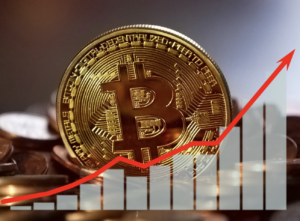A research titled “Submarine Fiber Cable Market Business Growth Forecast 2023-2030” by Worldwide Market Reports provides valuable insights into the major opportunities contributing to the growth of the submarine fiber cable market. This comprehensive analysis of the global Submarine Fiber Cable industry highlights key trends in business formation, revenue, market share, recent developments, and M&A activity.
The submarine fiber cable market is a critical component of the global telecommunications infrastructure, enabling high-speed data transmission across oceans and connecting continents. It plays a pivotal role in facilitating international internet connectivity and communication services, including voice, data, and video transmission. With the increasing demand for data-intensive applications and the global expansion of internet connectivity, the submarine fiber cable market has witnessed significant growth.
Major players in the industry are continually investing in the development and deployment of advanced submarine cable systems to meet the growing demand for seamless international connectivity. These companies are focused on expanding their Submarine Fiber Cable portfolios and capabilities, implementing effective market entry strategies, and establishing strong market positions and geographic footprints. Understanding the distinctive positions that these companies hold in the developing global Submarine Fiber Cable market is crucial for market participants.
The submarine fiber cable market has experienced robust growth driven by several key trends. Firstly, the increasing demand for high-speed internet and the proliferation of cloud-based services have fueled the need for more submarine cables to enhance data transfer capabilities. Users worldwide are demanding faster and more reliable internet connections, and submarine fiber cables are the backbone of these connections.
Secondly, the adoption of 5G technology has created new opportunities for submarine cable providers. 5G networks rely heavily on robust and low-latency international connections, and submarine fiber cables are crucial for meeting these requirements.
Thirdly, there is a growing trend toward establishing diverse and redundant cable routes to enhance network resilience. With the increasing frequency of natural disasters and other incidents, it is essential to minimize the risk of disruptions to international connectivity. Redundant cable routes ensure that even if one cable is affected, there are alternative routes to maintain uninterrupted connectivity.
Lastly, the market is witnessing the emergence of new players and consortiums, contributing to competition and innovation in the industry. This trend is driving the development of more advanced submarine cable systems and increasing the availability of international connectivity options.
The market segmentation analysis reveals that submarine fiber cables can be categorized into two types: shallow-sea cables and deep-sea cables. Shallow-sea cables are used for relatively shorter distances, while deep-sea cables are suitable for longer distances. The application of these cables extends beyond communication. They are also used for light energy transmission and other purposes.
In terms of regional analysis, the market covers North America, Europe, Asia-Pacific, South America, and the Middle East & Africa. These regions have witnessed significant growth in submarine fiber cable installations, driven by the increasing demand for high-speed internet connectivity and the expansion of communication networks.
Despite its growth potential, the submarine fiber cable market faces several challenges and risks. One significant challenge is the high capital investment required for the design, construction, and maintenance of submarine cable systems. These projects require significant financial resources, and continuous investments are necessary to keep up with technological advancements.
Additionally, geopolitical tensions and regulatory issues can pose risks to cable projects, potentially delaying or disrupting connectivity. Given that submarine cables often traverse multiple jurisdictions and territorial waters, political stability and regulatory compliance are critical for the successful completion and operation of these projects.
Physical risks such as undersea earthquakes, tsunamis, and ship anchor damage can also lead to costly cable outages. Steps must be taken to minimize these risks through careful route planning and the use of resilient cable designs.
Furthermore, competition in the market is intense, which can lead to pricing pressures and thinner profit margins for cable providers. It is crucial for companies to differentiate themselves through technological advancements, superior service quality, and efficient operations to maintain a competitive edge.
Lastly, the industry must continually adapt to evolving technology, including the development of next-generation submarine cables with higher data transmission capacities. As data demands continue to increase, it is essential for submarine fiber cable providers to invest in research and development to remain competitive in the ever-changing global telecommunications landscape.
In conclusion, the submarine fiber cable market is experiencing significant growth driven by the increasing demand for high-speed internet connectivity and the expansion of communication networks. Major players in the industry are investing in advanced submarine cable systems to meet these demands. However, challenges such as high capital investment, geopolitical tensions, physical risks, intense competition, and evolving technology must be addressed to ensure the sustained growth and success of the submarine fiber cable market.
With its potential for growth and innovation, the global Submarine Fiber Cable market presents valuable opportunities for new entrants. By understanding the market dynamics, competition, and upcoming trends, participants can enhance their share of the market and capitalize on the lucrative prospects offered by the submarine fiber cable industry.
For more detailed information and insights, interested individuals can download the full market report, which includes a summary of the research work, table of contents, the study’s depth of coverage, market participants at the forefront, research methodology, and a list of the top key players in the Submarine Fiber Cable market.





